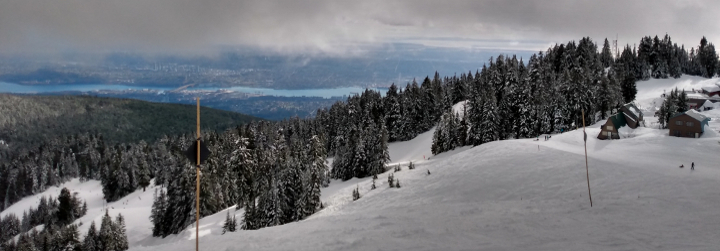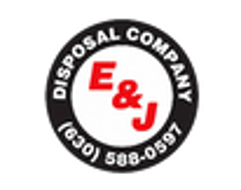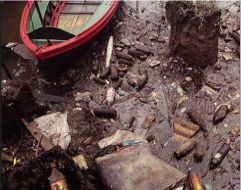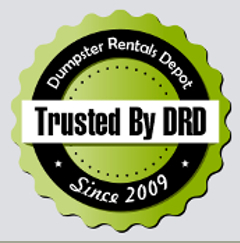365 Ways To Save The Earth

Last month I was assigned to run a research and come up with the several posts for our Dumpster Rentals Cooperative blog. We wanted to discover the best practices in proper disposal and recycling of waste materials. I started by searching the web and found tons of relevant materials on recycling and proper disposal of waste. It was more then enough interesting publications, statistical reports and stories but for curiosity reason I decided to visit my local library to see what I can find on shelves. At this point I was pretty skeptical, assuming that most of the printed stuff must be outdated and therefore mostly irrelevant.
My skepticism vanished as soon as I picked up from the shelf an increasable book ‘365 Ways to Save Earth’ written by Anne Jankeliowitch and Ariel Dekovic. The book consisted of 365 Philippe Bourseiller’s spectacular photographs of the natural world paired with simple proposal that presented a bit of advice for ordinary urban and suburban every day living: dispose of leftover paint properly, check your car’s exhaust, boil only as much water as you need when making tea or coffee, etc. At first, I was amazed by stunning views on the pictures but as I kept reading through I was amazed even more. I just realized how much all of us can do contributing to protection and saving our planet.
Being inspired by the book, I immediately decided to broaden the scope of my project. Based on what I’ve learned, I decided to introduce the ‘365 Ways to Save the Earth’ initiative to readers of our blog. I felt that I need to share with my fellows and blog readers the amazing facts that I learned from the book. I have never thought before that the food I buy in the supermarket often comes from halfway around the world, and by purchasing it, I may be supporting the destruction of distant forests.
It turned out that the way we live our daily lives – what we eat, how we get to work, where we build our houses – has a transformative effect not just on our immediate surroundings, but on places as far as the North Pole and Antarctica.
In North America we are the greatest waste producers in the world so I felt that it was imperative for us to be the greatest environment protectors as well. And this is not just about following waste recycling regulations. The idea is much broader: Reuse-Reduce-Recycle & Waste Wisely!
Surely, saving a planet is not the issue that can be addressed by individual action of one person. However, unless we North Americans take steps to reduce our impact on this issue, it is hard to imagine how it can ever be addressed successfully.
Here are a few things each of us can easily do to contribute a mutual effort:
Buy recycled paper
Recycling paper while important, is only one part of of the lifecycle of paper. We must also look at consumption of paper. Recycled paper products are widely available, and are considerably less damaging to the environment in production. Producing a ton of virgin paper requires 3,688 pound of wood, 24,000 gallons of water, 216 pounds of lime 360 pounds of salt cake, and 76 pounds of soda ash. Eighty four pounds of air pollutants, 36 pounds of water pollutants, and 176 pounds of solid waste are then treated and thrown out. In contrast, making paper from recycling materials results in 74% less air pollution and 35% less water pollution. This means that every ton of recycled paper keeps almost 60 pounds of pollutants out of the atmosphere.
Choose paper, box files, folders, envelopes, cards, toilet paper, and paper towels made from recycled paper and cardboard.
Report any unusual pollution.
About 2,500 species of fish, shellfish, and other sea life are commercially exploited worldwide. Overfishing by a well-equipped, and excessively large, world fleet is considerably reducing fish population’s capacity to replenish themselves, and pollution of the sea is making the problem worse.
Overfishing and pollution could have severe effects on world food supplies, especially in developing countries, where 1 billion people depend of fish for food.
If you notice an instance of fresh water pollution, such as froth, a brown trail, or the smell of sewage, alert your regional or town water authority. If you notice pollution, such as waste or oil, while at the beach, notify a city or town official at once.
Don’t use aerosol air fresheners.
Clorofluorocarbons (CFCs), when first appeared in the 1930s, have been used chiefly in refrigerators, aerosol, canisters, and fire extinguishers. They are now known to be responsible for about 80% of the damage to the ozone layer, the layer in the atmosphere that protects us from the sun’s damaging ultraviolet rays. Once molecule of CFC can destroy up to 100,000 ozone molecules, and the concentration of CFCs in the atmosphere has risen fivefold since the 1970s.
Even without considering CFCs, air fresheners in aerosol cans are toxic, flammable and produce waste. Replace them with potpourris, essential oil diffusers, candles, incense, fragrant plants (for example, citronella or honeysuckle), citrus fruit peels, or oranges studded with cloves.
At Dumpster Rentals Cooperative we greatly appreciate the support we continuously receive from Dumpster Rentals Seattle , Dumpster Rentals Long Beach , Dumpster Rentals Sacramento , Dumpster Rentals Bellevue , Dumpster Rentals Ocala , Dumpster Rentals Dallas and we would like to thank many other Dumpster Rentasl and Waste Hauling companies for their great support of this environment protection movement.
- Published: 2011-10-09T11:50:20-07:00
- Author: Anna Krupp, Dumpsters & Roll Off Container Consultant




